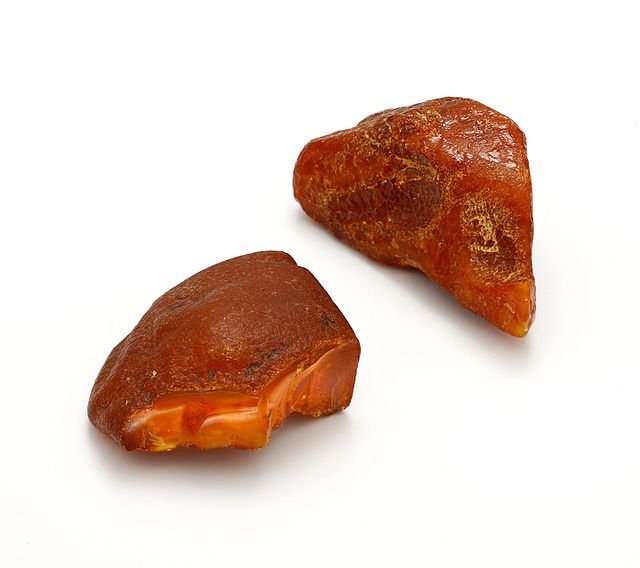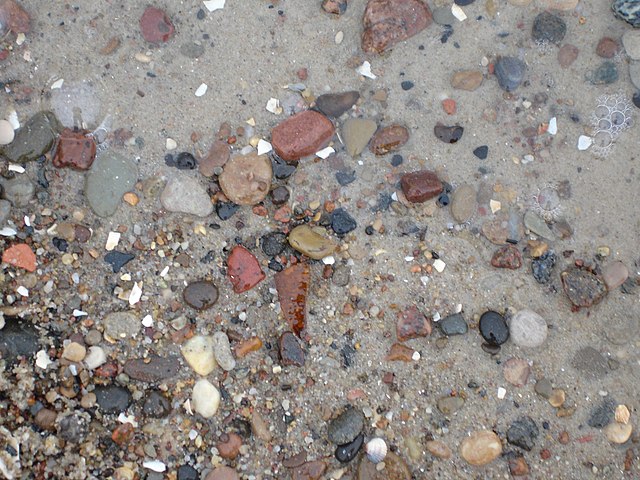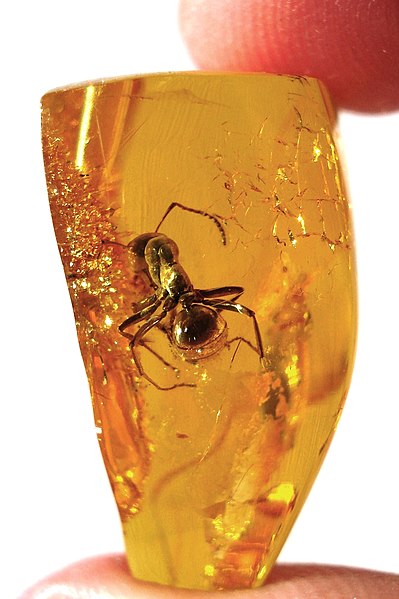The Baltic region is home to the largest known deposit of amber, called Baltic amber or succinite. It was produced sometime during the Eocene epoch, but exactly when is controversial. It has been estimated that these forests created more than 100,000 tons of amber. Today, more than 90% of the world's amber comes from Kaliningrad Oblast of Russia. It is a major source of income for the region; the local Kaliningrad Amber Combine extracted 250 tonnes of it in 2014 and 400 tonnes in 2015.
Raw unpolished Baltic amber
Open pit amber mine in Kaliningrad, showing the lithology of the Prussian Formation, the source rock of Baltic amber
Typical beach sand on the Baltic Sea where amber is often washed up.
Fishing for amber at the seacoast, Mikoszewo, close to Gdańsk, Poland.
Amber is fossilized tree resin that has been appreciated for its color and natural beauty since Neolithic times. Much valued from antiquity to the present as a gemstone, amber is made into a variety of decorative objects. Amber is used in jewelry and has been used as a healing agent in folk medicine.
An ant inside Baltic amber
Unpolished amber stones
Fishing for amber on the coast of Baltic Sea. Winter storms throw out amber nuggets. Close to Gdańsk, Poland.
Wood resin, the source of amber







